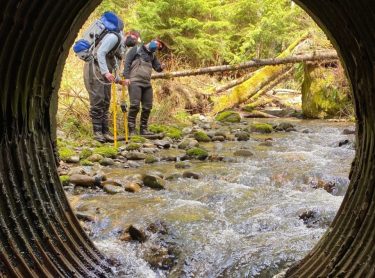
To help struggling salmon populations, the state of Washington is legally required to replace hundreds of culverts that divert streams under roadways. The state transportation department is replacing old, rusting metal pipes with broad, concrete promenades that provide more gradual gradients and gentler flows for salmon swimming upstream to access more spawning grounds. The full scope of the effort will last 17 years and cost $3.8 billion.
But how successful are these projects at boosting fish traffic? A team from the University of Washington and the National Oceanic and Atmospheric Administration performed genetic sleuthing during two culvert replacements in 2021-22 near the city of Bellingham. Post-intervention monitoring shows that upgrading one culvert — which went under Interstate-5 — had a big impact, and the other culvert may not have been as much of a barrier. Construction did not disrupt fish populations at either site.
“This was an amazing study to work on, both in terms of the science and the broader implications. We demonstrated that we can measure the impact of management interventions using only DNA recovered from the water,” said lead author Elizabeth (Eily) Andruszkiewicz Allan, who began the project as a UW postdoctoral researcher in marine and environmental affairs and is now chief scientist at the UW-based eDNA Collaborative.
Read more at UW News »
